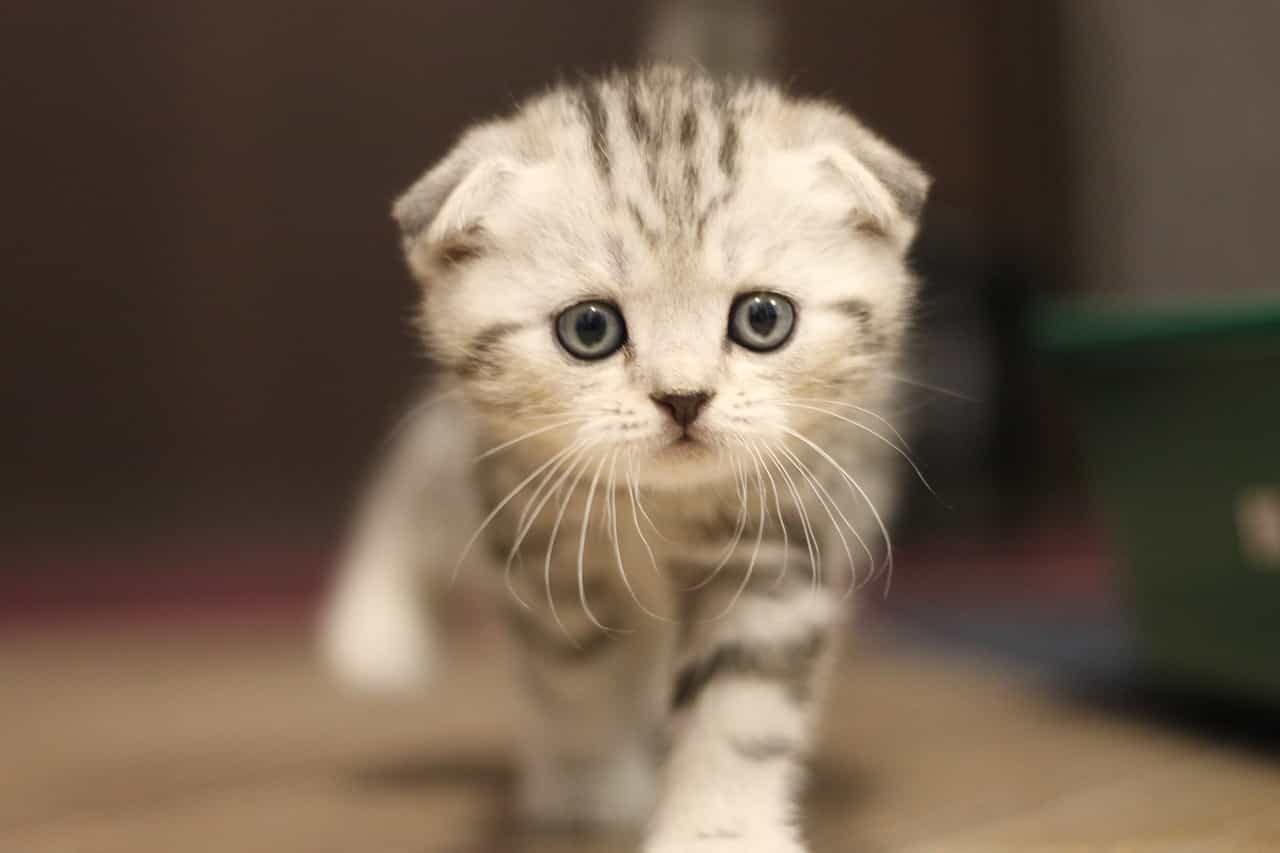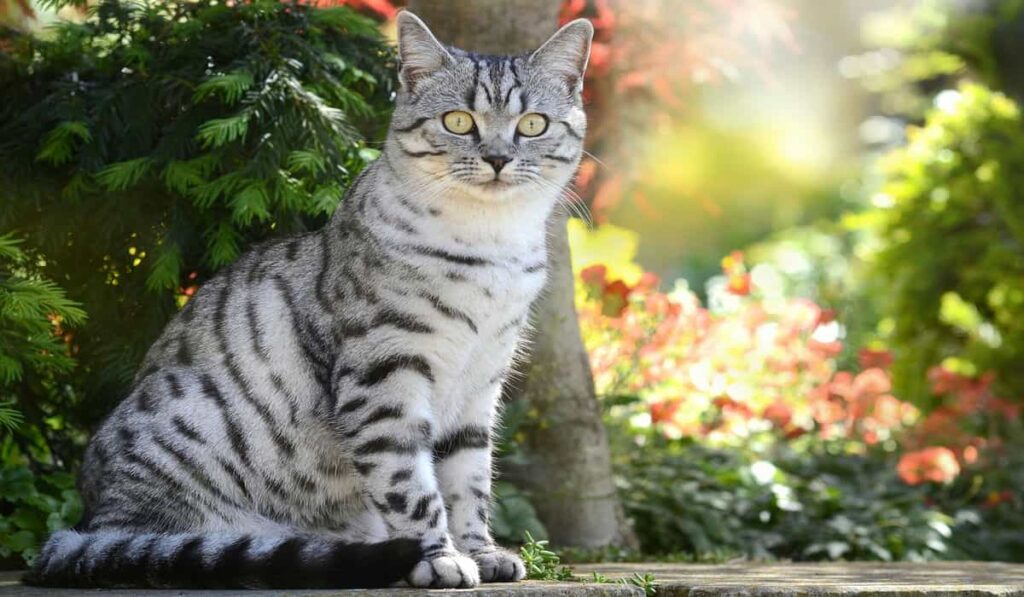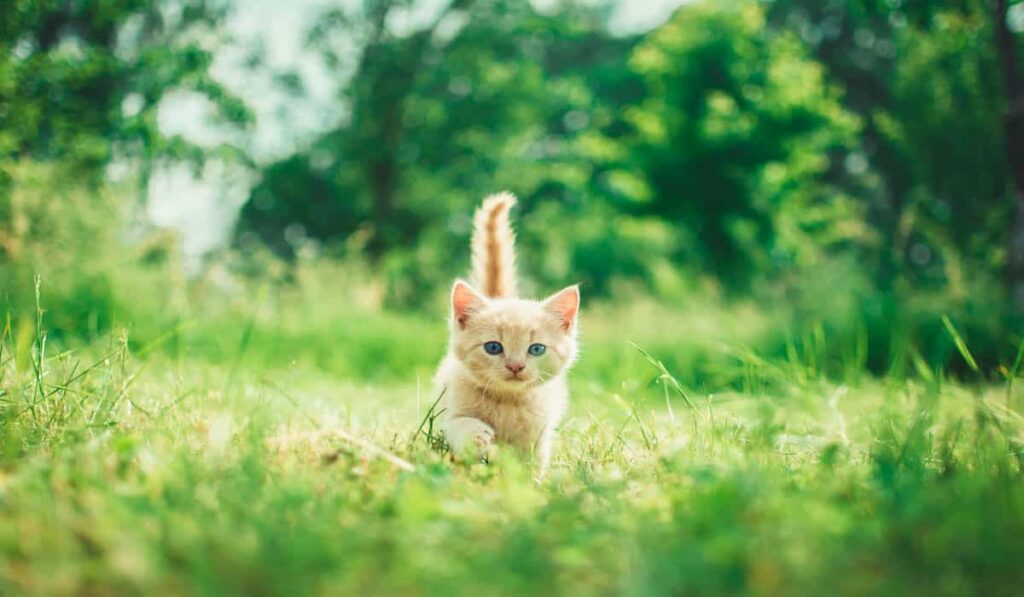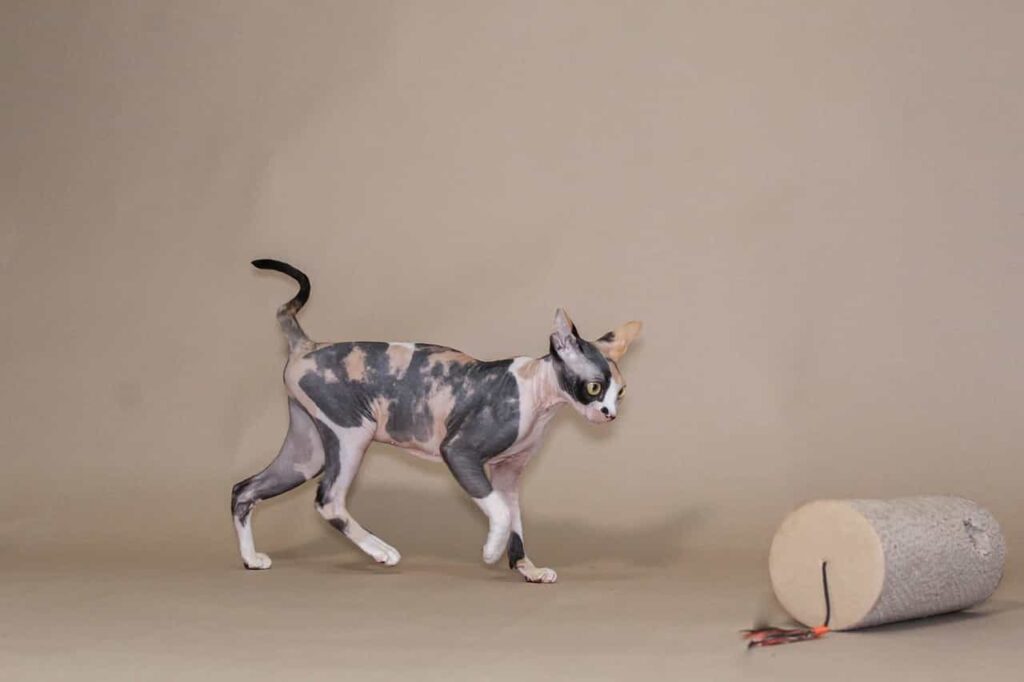The Scottish fold is a shorthaired, calm, sweet-tempered, and interesting-looking breed. It is separately known to people for its folded ears.
The name `Scottish fold` has from these folded ears, which resemble the Owls.
Though it is a mutated gene, people like it so much the breed. That is why the practice continues. The Barn Cat in Scotland is considered its ancestor.
The deformity of anatomy and skeletal disorder causes the folded ears.
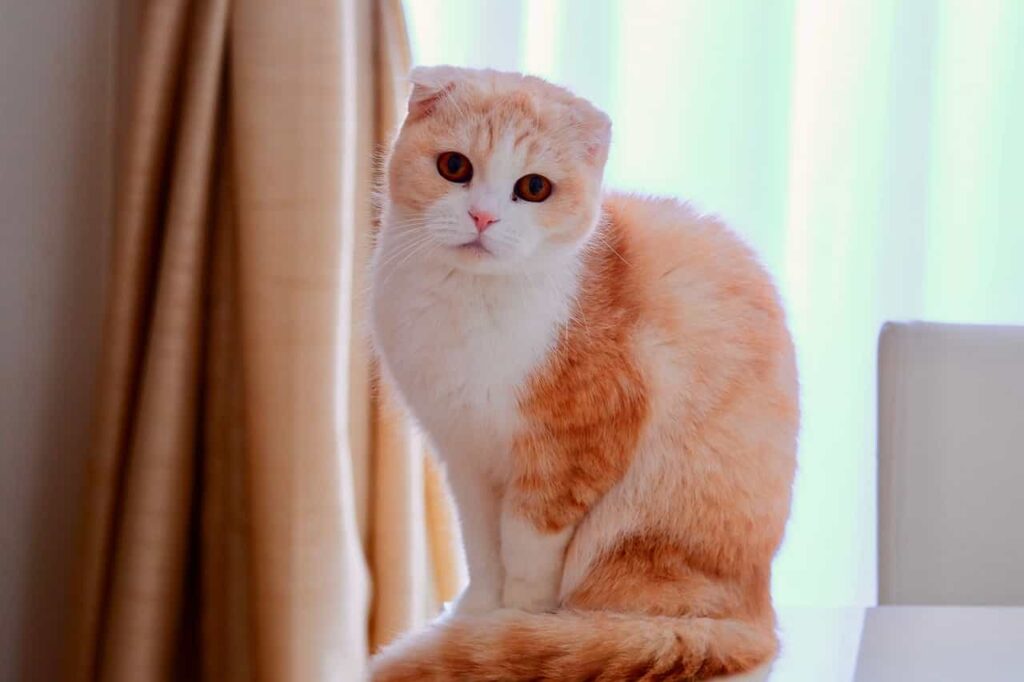
Jump to Sections
Breed specialty of Scottish Fold:
Nickname: Fold
Weight: Male cats are up to 11 pounds and females are a maximum of 10 pounds.
Length: Maximum 30 inches.
Coat length: Usually short-lengthed but long-lengthed are also seen.
patterns: Calico, tabby, and Tortoiseshell.
Coat colors: White, Black, Brown, Cream, and Grey.
Eye color: Green, Gold, and also Blue green mixed.
Personality: Very sociable and affectionate. They don’t demand anything.
Life Span- 12 to 14 years.
Non-hypoallergic
Originated from Scotland.
Origin of the Scottish Fold breed:
The origin of the Scottish sweety is very interesting. In 1961, There was a barn cat, named Susie was found on a farm in Perthshire, Scotland.
It is considered the ancestor of the Scottish breed. Susie had folded ears and it was a natural mutation. He has passed the characteristics to her children.
However, the father of those children was unknown. A neighboring farmer, whose name was William Ross began to breed the kittens with the help of a geneticist.
Susie had a car accident and she died. Her daughter sustained her line.
Soon it was known to all the Scottish fold cats don’t take birth with folded ears. The gene begins at 21 days of age in the kittens. The folding ears are nothing but a skeletal disorder.
The fold gene interrupts the development of cartilage and bones throughout the body. It is a severe health problem, called Ostiocrondrodysplasia. It can cause crippling Arthritis at a young age. When a cat has two copies of the gene is known as Homozygous and naturally, it can’t be bred.
So, the Scottish breed felt controversy. Many veterinarians were against the breeding of Scottish fold as the Ostiocrondrodysplasia may cause pain or debilitation.
Both breeding and debating continued together.
Finally, the breed got registered with The Governing Council of the Cat Fancy (GCCF) in the United Kingdom and also withdrawn due to unethical breeds regarding health issues. But breeding continues in the USA and other countries.
Later the Scottish are accepted by the American Cat Fanciers Association ( ACFA), Cat Fanciers Association (CFA), and The International Cat Association (TICA). That’s all the long story.
The appearance of the Scottish Fold breed:
Well, the Scottish folds are not so good-looking but Adorable.
Body: Its overall body is rounded and its bones are medium. The cat stands with a firm and well-paddled body.
Head: the head is also rounded with a strong chin and jawline.
Well-rounded whisker pad in the muzzle. The cat is short-necked and the males have jowly looks with prominent cheeks.
Ears: The ears are folded downward and ear tips are small.
Eyes: The large, wide-opened, and floating eyes have very innocent and cute looks. Eye colors match the coat colors. A broad nose is sitting in the middle of the eyes.
Leg and paws: Scottish cat’s legs are small and toes are neat and round. Five fingers are in the front and four are at the back.
Tail: The tail can be medium and long, proportionate to the body size. Also flexible having a round tip.
Coat colors and eye colors: Coat colors are white, Black, Brown, Cream, and Grey with the exception of hybridization colors such as chocolate, Lavender, or Himalayan patterns. Eye colors are according to the dominating color of the body. Odd-eyed and Blue eyed are available in all bi-color and Van. One-eyed may have one Blue and one Gold eye with a similar depth.
Coat length: Maybe both short and long. Looks dense and separated from the body, not lying to the body. Coat texture can vary due to seasonal or regional differences.
Temperament and nature of Scottish Folds:
The Scottish fold is a sweet, calm, affectionate, intelligent, soft-spoken, and high-personality cat. It is not so active but loves to play catching and Catnip mouse.
They mostly play in adulthood. You don’t need to worry about them as they’re independent by nature.
They are intimate with any one person in the house and don’t get uncomfortable in a busy and crowded household. Though they allow to cuddle or take them to the lap of anyone, their bonding is always with the same single person.
Naturally, they’re soft-spoken but can be vocal if their adorable person ignores or neglects them or just want a simple scratch.
Always love to be around their owner instead of being on the lap and trying to seek attention. Their hearing power is so high though the ears are folded.
Caring, grooming, and exercise:


The Scottish cats need more care in their ears and playing. As their ears are folded so they need very good care.
If you own a Scottish fold you must check and clean your pet’s ears once a week to prevent infections and dirt. You also engage them in playing by providing Cat trees, Catnips, and posting scratching furniture.
Besides, brush their hair to avoid hairballs and shedding, brush their teeth once a week, trim their nails, etc. When a Scottish is a kitten, take extra care of it.
Socialize them so that they can adjust to the new environment. Take them to the Veterinarian twice a year. They’re a bit allergenic, but not hypoallergenic.
So, always be careful about their fur and skin.
Like other cats, Scottish Folds need regular exercise to stay healthy and fit.
Health and problems of Scottish Folds:
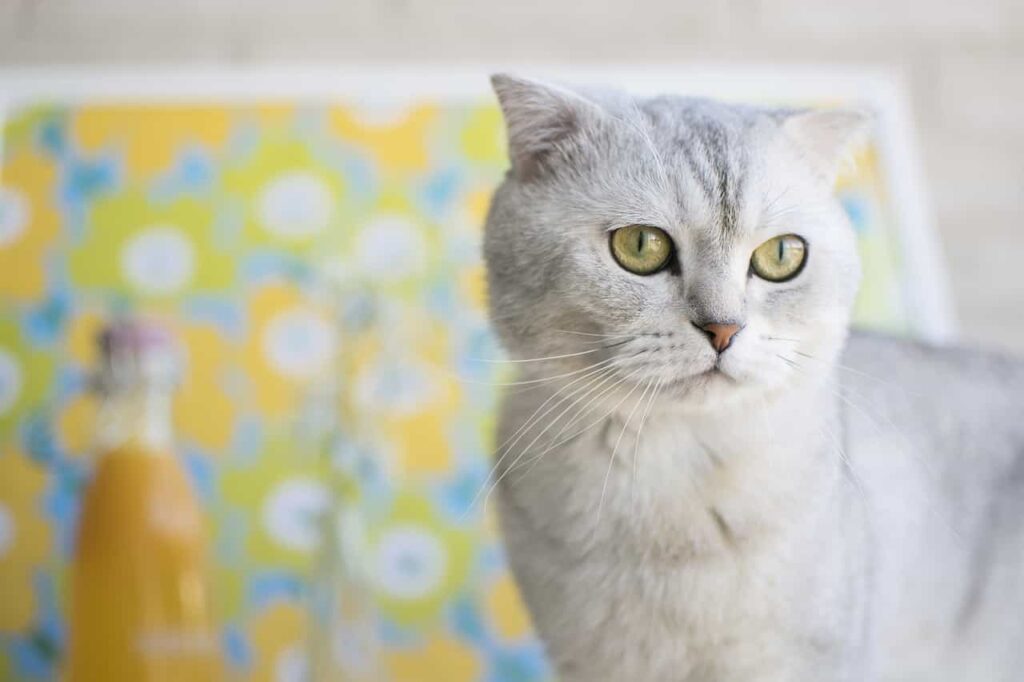

The Scottish breed may suffer from obesity. They’re also genetically susceptible to Polycystic KIdney and Hip Dysplasia.
As I told you before that their sweet ears are folded so they can be affected by ear infections and general pain. So, take them to a regular vet check-up.
They’re also prone to – Diabetes Mellitus, conjunctivitis, Upset Stomach, Hepatopathy, and Feline Upper Respiratory Disease- Claimed by Nationwide Pet Insurance Policy Holder in 2016.
Scottish folds have Arthritis in their tails in the Sunset years of their lives. You may have noticed that they pull their tails when you take care of or groom them.
That means, they feel pain and want to keep safe their tails from any kind of touch. This problem is called Osteochrododysplasia. It is also responsible for their folded ears.
Food and nutrition:
The Scottish fold cats’ food habits are just like other breeds. Obviously, they’re carnivorous. You can give cane food both raw and wet. No special eating habits. They also have 41 different types of nutrients.
Fun facts about Scottish fold cats:
- The Scottish Folds possess an anti-cat Attitude.
- Their ears can be single or double-folded and can be even bi-colored.
- Though their origin is Scotland nowadays they’re more available in North America and Japan.
- If the Breed is been inter-bred with other cats. Their folded ears could be straight.
- The cats need special care for their tails as the tails suffer from Arthritis.
- Their meowing is distinctive and sounds sweet.
Breed overview of Scottish Fold Cats:
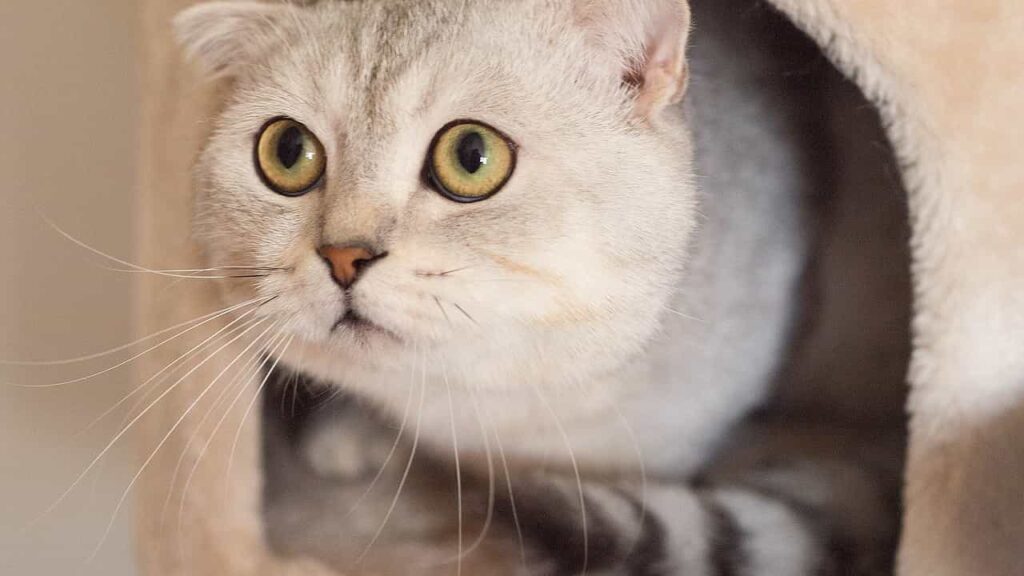

Scottish fold cats are sweet, calm, affectionate, friendly, charming, and adaptable for most households- no doubt and questions.
Pain in their tails and folded ears are the most significant traits of the breed.
Where to adopt or buy a Scottish Fold cat:
You can buy any pet from trusted and reputed breeders in your locality. Besides you also can adopt from petfinder.com, adopt-a-cat.com, Scottish Fold Rescue, adoption page.
Name suggestion:
I am suggesting you some cute and sweet names for your Scottish-
Leo, Daisy, Minnie, Max, Tiger, Ace, scout, Milo, Midnight, and Domino.
Cons of Scottish Fold cats:
- There is always a high risk of cartilage and bone disease with the cat breed.
- They always remain in discomfort and stiffness they’re whole lifelong.
- Their breeding was controversial.
- Scottish Folds ears are high-maintenance ears and always need to be cleaned as the ears are folded and prone to infections.
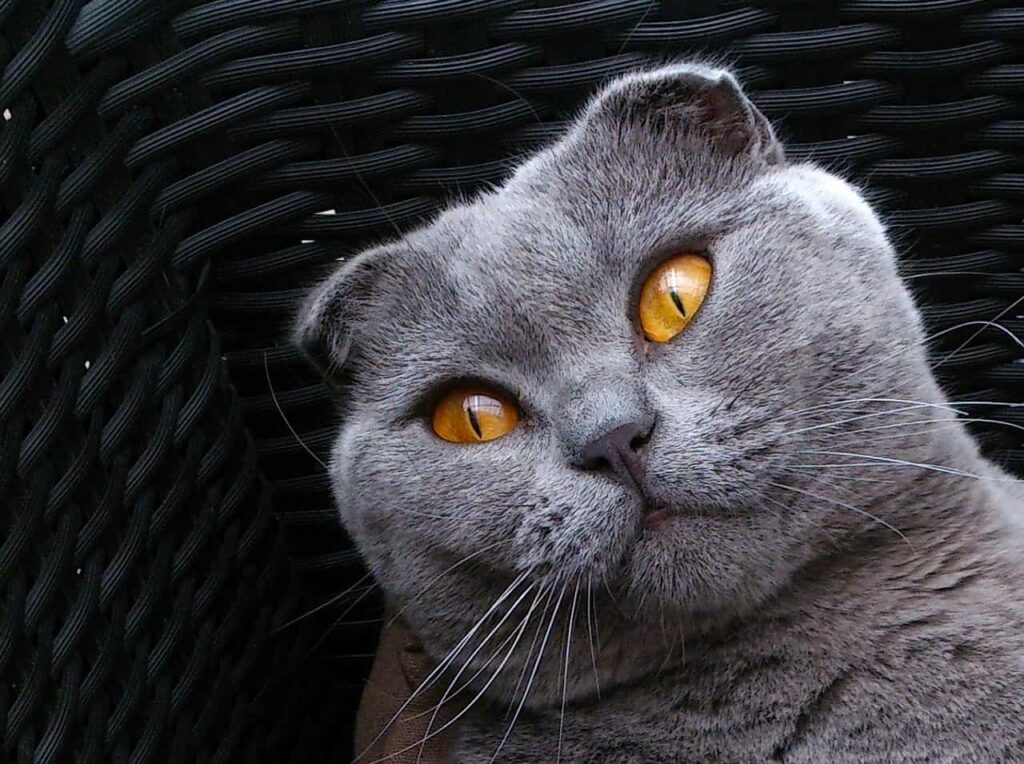

Frequently Asked Questions and answers:
Are the Scottish folds friendly with children?
Ans: Yes, they’re friendly with the children but get intimate with only one person in the house whom they love and trust.
Is the breed suitable for first-time owners?
Ans: Yes, they’re suitable for first-time parents because they’re very calm, intelligent, and low-maintenance cats.
Is the Scottish breed banned in Scotland?
Ans. Yes, the adorable breed is banned in Scotland due to health issues.
Do they Scottish fold likes to be held?
Yes, they like to be held until they feel pain due to skeletal abnormalities called Osteochrododysplasia.
Is the breed expensive?
You can get a Scottish Fold between the range of $1000-$2000 but in most cases, the other expenses like vaccination, spay/ neuter surgery, and others are included in the amount.
What is the shedding level of Scottish Fold cats?
Well, their shedding level is medium in the Spring season.

